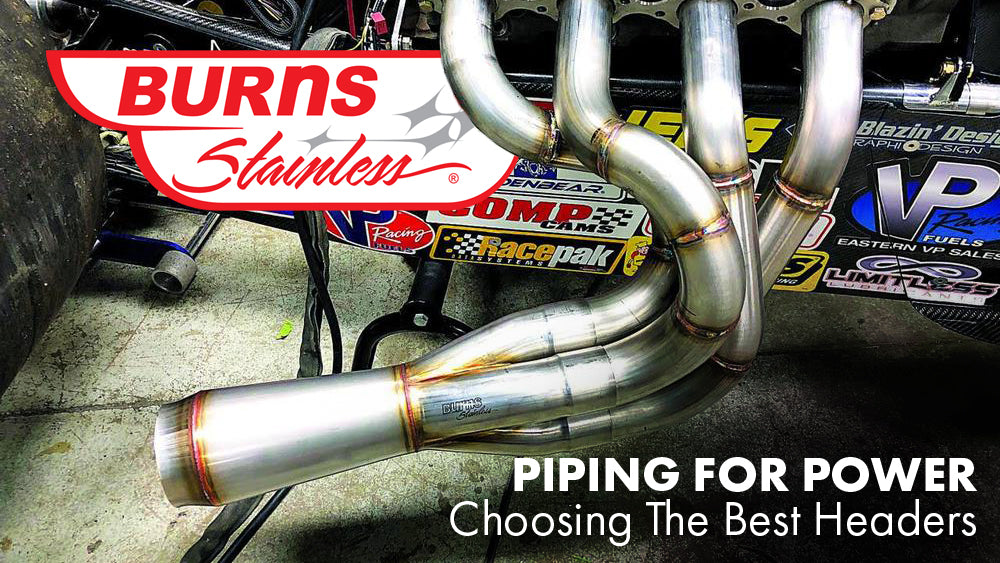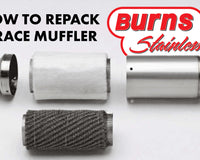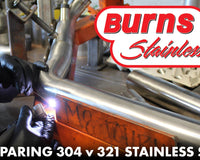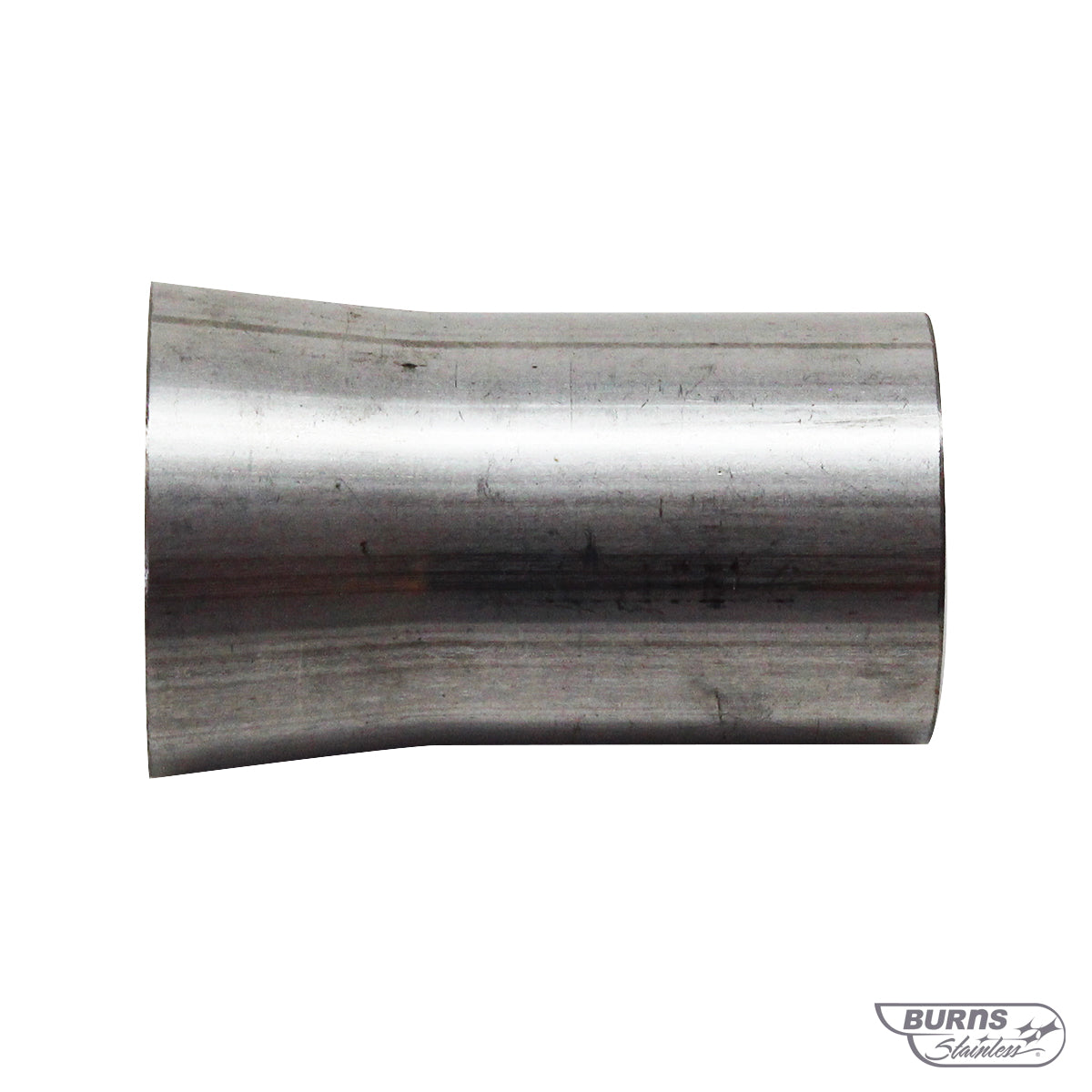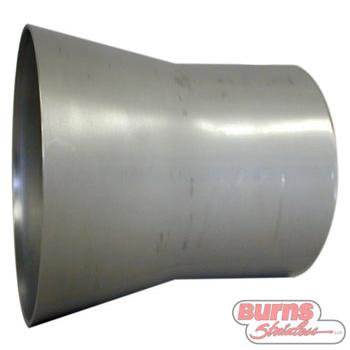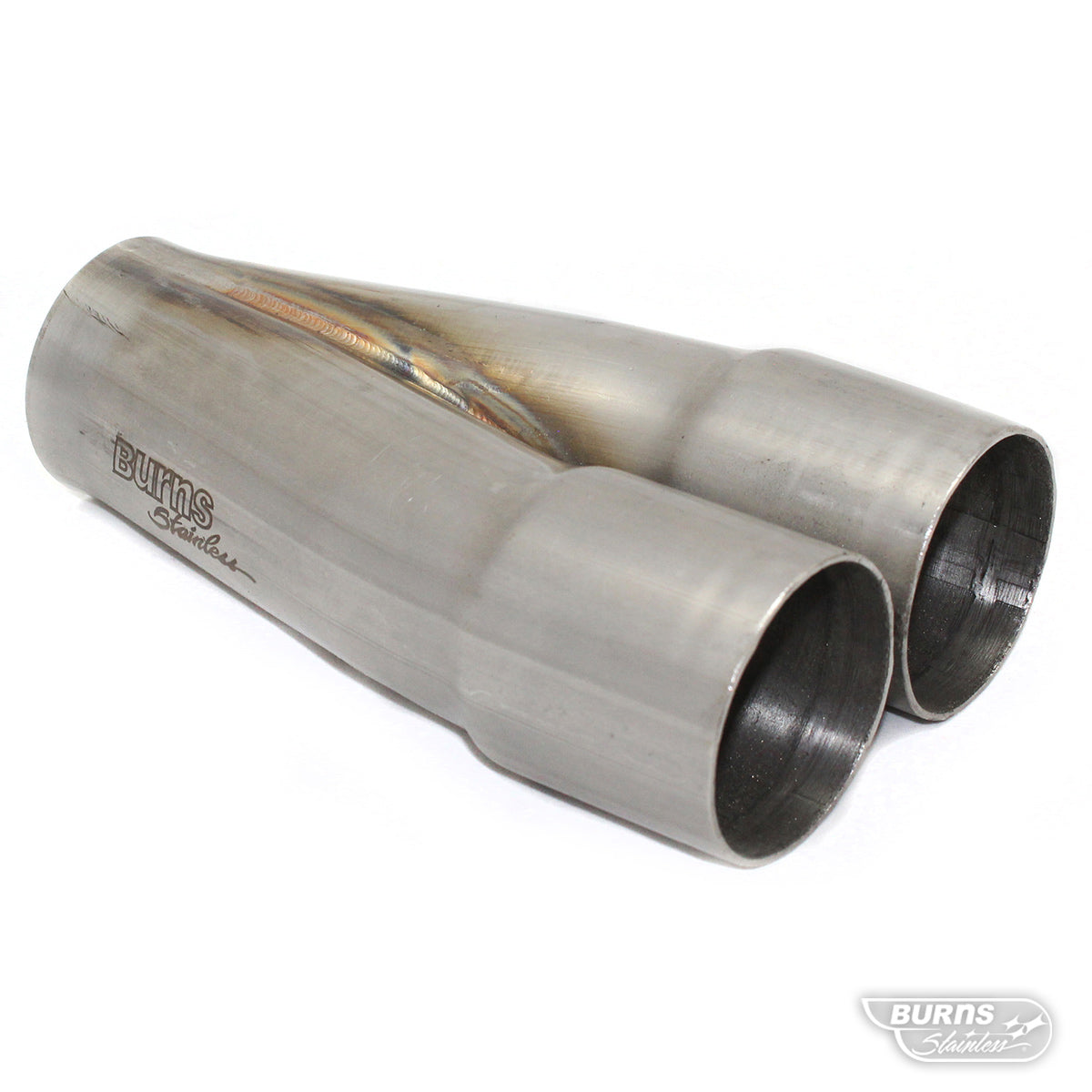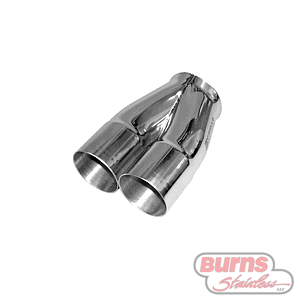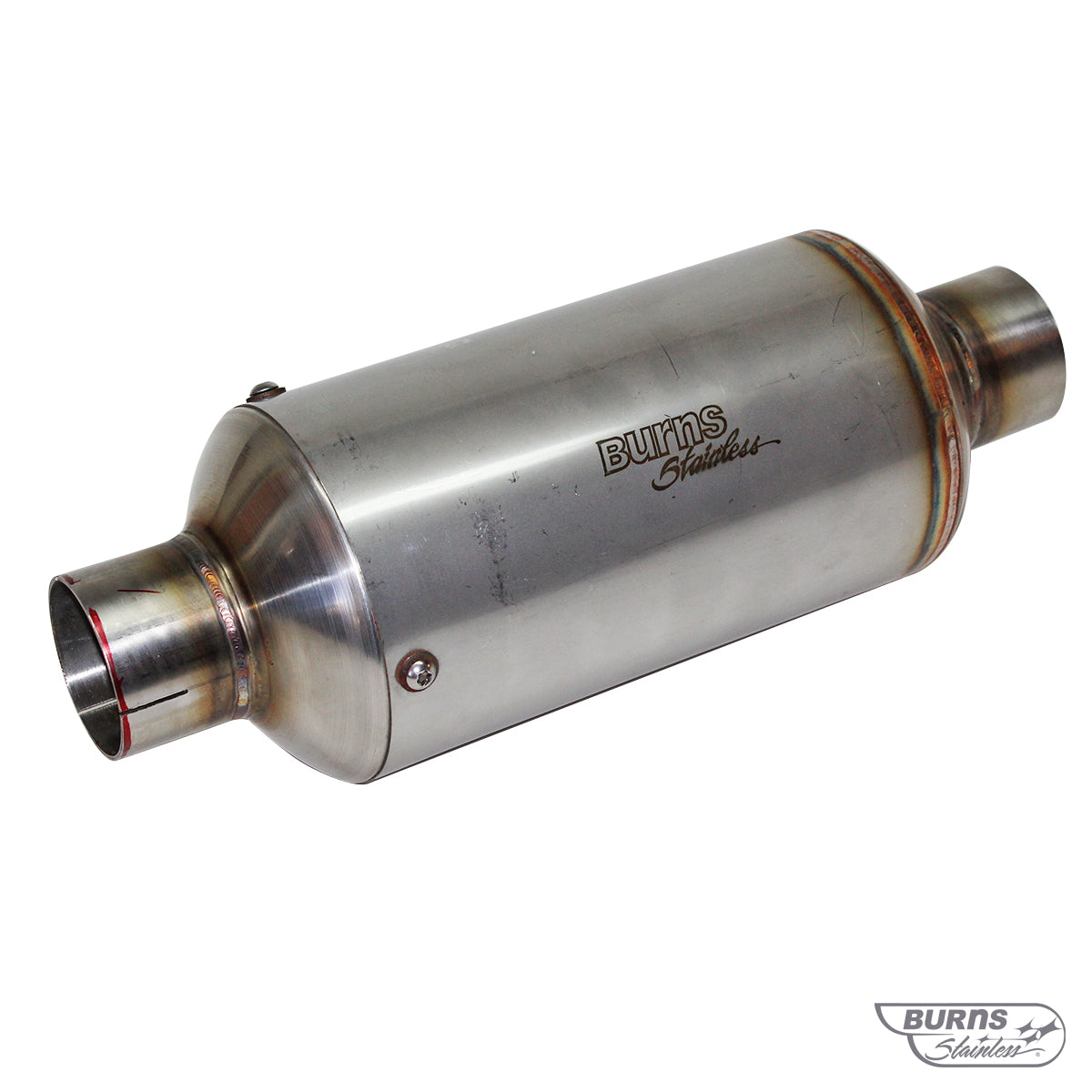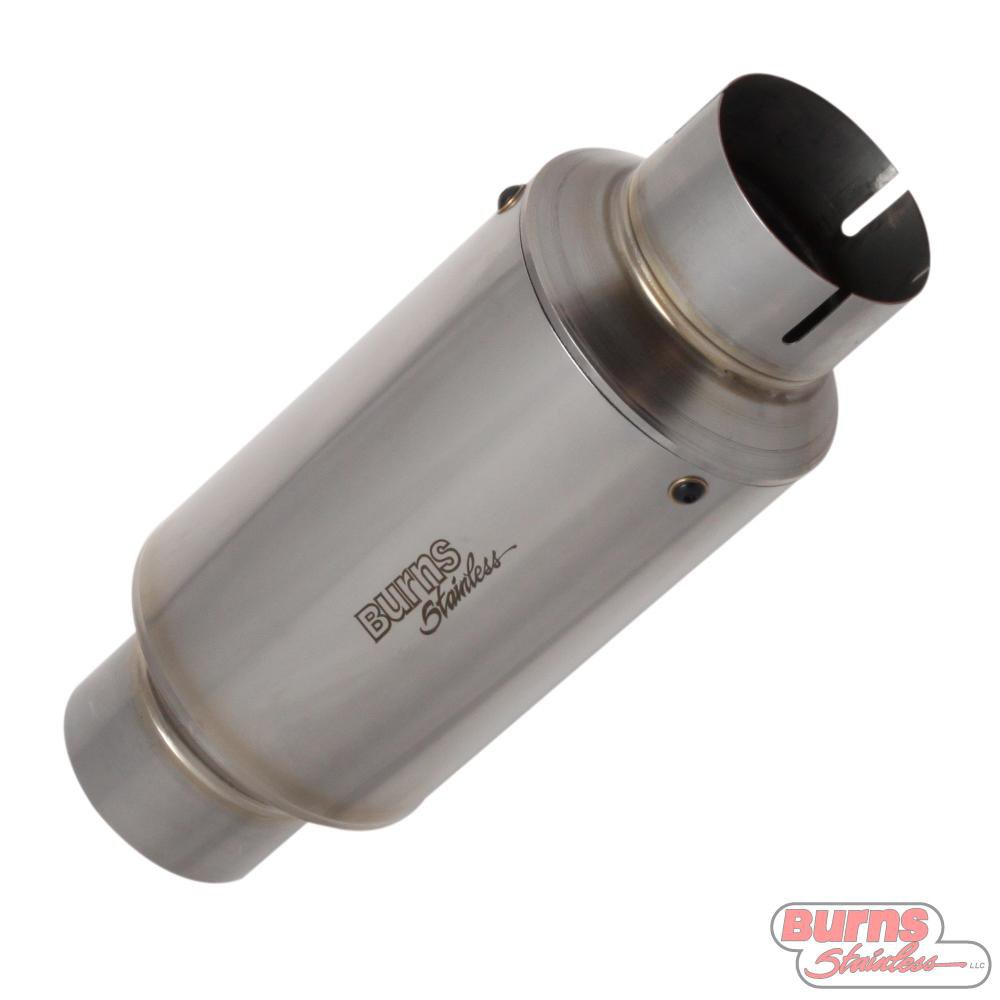Did you miss this article in the National Dragster? The article includes some great information on exhaust design for drag racing. Some quotes from Vince:
“When choosing an optimum racing header, the primary things to consider include engine type,” said Vince Roman, owner of Burns Stainless. “We also ask, is the engine in-line or V-type? And what’s the application? Obviously, we are talking drag race engines, but more importantly, what rpm do you use to leave the line and shift, and what rpm will the engine reach when it crosses the finish line?”

He continued, “The exhaust header design will very much depend on the rpm band that the motor will be running. Also, what improvements are you after? Do you want to improve the bottom end, do you need to turn more rpm at the top? The rpm band of the engine will play an important role in determining the primary size and length of the exhaust primaries. Also, consider the cylinder head. Different cylinder heads have different mounting bolt designs and port sizes. It’s typically OK for an exhaust primary to be larger than the exhaust port — but any obstruction, such as from too small a primary tube or mismatched port/exhaust.
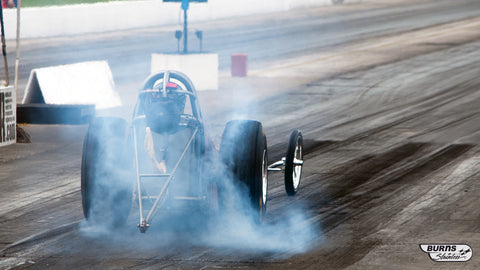
“Come to the Burns Stainless website and fill out the race engine spec form. Burns will help racers select primary size and length headers after determining bore, stroke, compression ratio, inlet and exhaust valve sizes, camshaft design, and engine-operating rpm range. The engine rpm band is the most significant factor in determining primary length, while displacement and power are important to determine primary tube diameter.
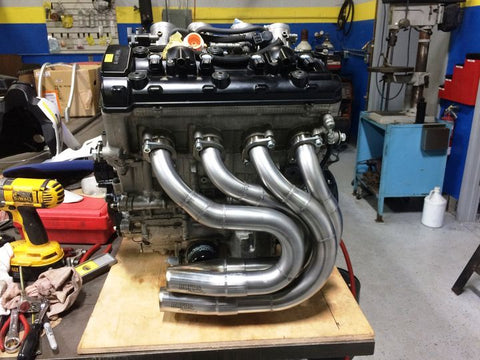
“In addition, merge collector sizing and design is determined based on application, power output, and operating rpm range. Typically, drag racing applications without mufflers benefit from using a reverse cone-megaphone collector. The sizing of the collector outlet [or throat] and outlet diameters are calculated by application. Burns Stainless uses proprietary X-Design software to size headers and collectors. Collector sizing is based upon the engine parameters, such as bore, stroke, valve sizing, and camshaft design. The number of steps is determined based on the collector sizing and exhaust port size. A well-developed modern racing engine will normally want a three-step design. Lower output engines will want two-step, or maybe only one-step, designs.”
As you can imagine, there is no “best” style/type of header collector. “Theoretically, V-8s will usually respond best to well-optimized Tri-Y designs,” said Roman. “However, Tri-Y designs must be optimized for the type of racing and engine design and often require considerable testing and optimization, whereas four-into-one designs with merge collectors can be optimally configured using X-Design and normally yield the best results out of the box.”
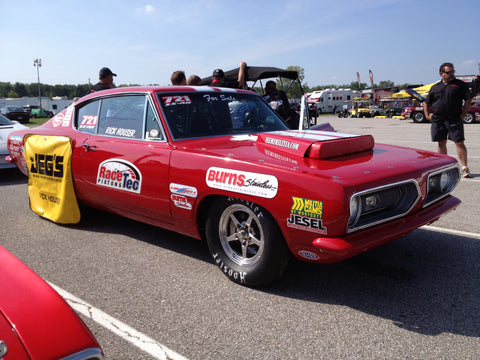
“The most common materials used in racing headers are mild steel and stainless steel,” said Roman. “Inconel and titanium are also used, though we do not recommend titanium for most automotive drag race applications. Mild steel is the least expensive option and the most readily available. The downside of mild steel is corrosion. Not only does this limit the longevity of a header, for extreme engines with large overlap cams, iron oxide particles from the rusting headers can be ingested into the cylinder during periods of reversion, causing cylinder wall and ring damage. Corrosion can be minimized using ceramic coatings. We recommend coating the inside and outside of an exhaust header.
“There are three common stainless steels used in headers. Of them, 409 is the least expensive stainless alloy. It is a ferritic alloy containing chromium and nickel, but with relatively high iron content, making it susceptible to rust. It is better than aluminized steel but will eventually rust and also has limited high-temperature capabilities. Next is 304 stainless steel, which is the workhorse stainless alloy. It is an austenitic material with low iron content, which provides it with excellent corrosion properties. Note that 304 stainless has excellent weldability and formability, making it an excellent choice for exhaust headers. An easy way to tell the difference between 409 and 304, or other austenitic stainless steels, is with a magnet. A magnet will not stick to 304.
“The next common stainless alloy used in exhaust is 321 stainless steel. This is essentially 304 that is stabilized with small amounts of titanium or niobium, providing better strength at higher temperatures. Burns Stainless recommends using 321SS when exhaust temperatures exceed 1,400 degrees Fahrenheit, which can easily be reached in many turbocharged applications. Also, 321 may be a good choice for thin-walled headers to provide an extra margin of safety.”

He continued, “The best material for race headers are Inconel alloys. These high-nickel/chromium alloys have been used in Formula One racing for decades. The most common alloy is 625, which has excellent high-temperature properties and is recommended for exhaust, which will experience exhaust gas temperatures in excess of 1,800 degrees Fahrenheit.”
Along with material, every racer should consider a header coating. According to Roman, “Ceramic header coatings have two main purposes: They keep the exhaust energy in the exhaust tube, helping to scavenge the combustion chamber, and they assist in managing under-hood heat, protecting electronics and other sensitive components.”

